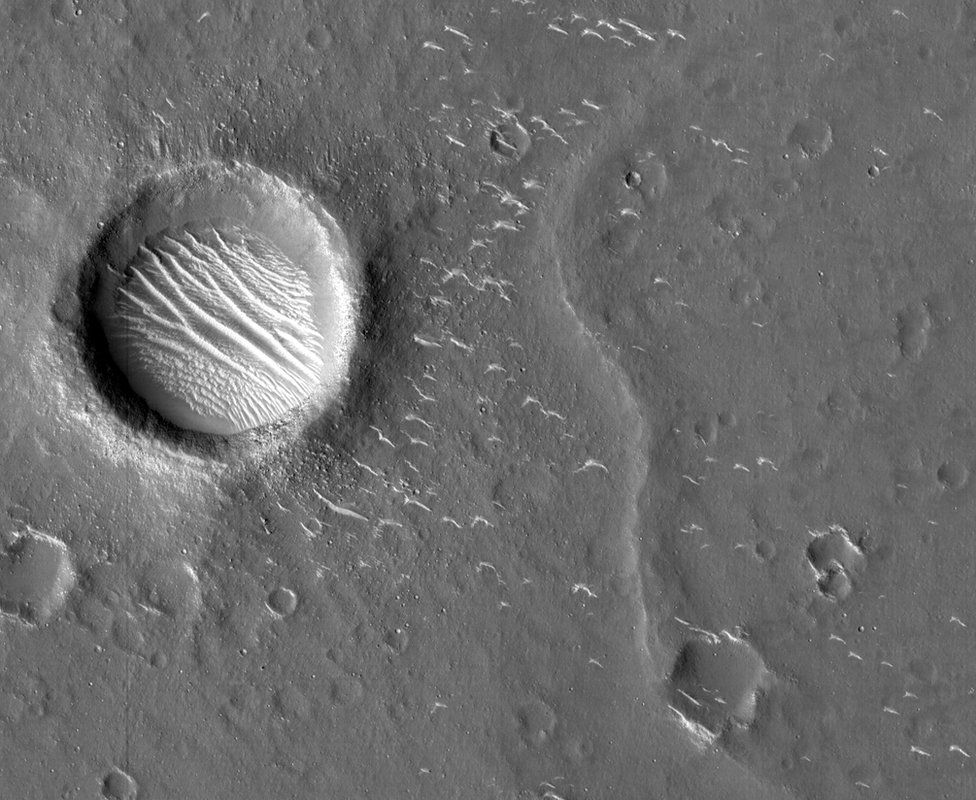The six-wheeled robot has made the hazardous descent to the surface of the Red Planet, China announces.

image copyrightCNSA
China has successfully landed a spacecraft on Mars, state media announced early on Saturday.
The six-wheeled Zhurong robot was targeting Utopia Planitia, a vast terrain in the planet’s northern hemisphere.
The vehicle used a combination of a protective capsule, a parachute and a rocket platform to make the descent.
The successful touchdown is a remarkable achievement, given the difficult nature of the task.
Only the Americans have really mastered landing on Mars until now. With this landing, China becomes the second country to put a rover on Mars.

image copyrightCNSA
Zhurong, which means God of Fire, was carried to Mars on the Tianwen-1 orbiter, which arrived above the planet in February.
The time since has been spent surveying Utopia, taking high-resolution images to pinpoint the safest place to put down.
The aim with all such ventures is to pick a spot, as far as possible, that is devoid of imposing craters and large boulders.

image copyrightGetty Images
Chinese engineers have to follow events with a time lag.
The current distance to Mars is 320 million km, which means radio messages take almost 18 minutes to reach Earth.
Every stage of the Zhurong’s approach to the surface therefore has to be managed autonomously.
The entry (into the atmosphere), descent and landing strategy follows a familiar architecture.
At the chosen moment, the rover, encased in an aeroshell, is released from the Tianwen orbiter and dives downwards.

image copyrightCNSA
A heatshield on the capsule slows the fall by pushing up against the Martian air. A parachute then opens to reduce the velocity still further. Finally, the robot breaks away on a rocket-powered bench for the manoeuvres that take it to the ground.
It is a daunting challenge, but China has shown great competence of late in its space endeavours, which have included putting two rovers on the Moon.
The robot looks a lot like the American space agency’s (Nasa) Spirit and Opportunity vehicles from the 2000s. It weighs some 240kg and is powered by fold-out solar panels.
A tall mast carries cameras to take pictures and aid navigation; five additional instruments will help assess the mineralogy of local rocks and look for any water-ice below ground.

